Banana trees are not only beloved for their delicious fruit but also for their tropical appeal. [1]
You can easily grow or propagate banana trees in your home garden by dividing healthy suckers with roots.
Just use sharp and clean tools to avoid any sickness.
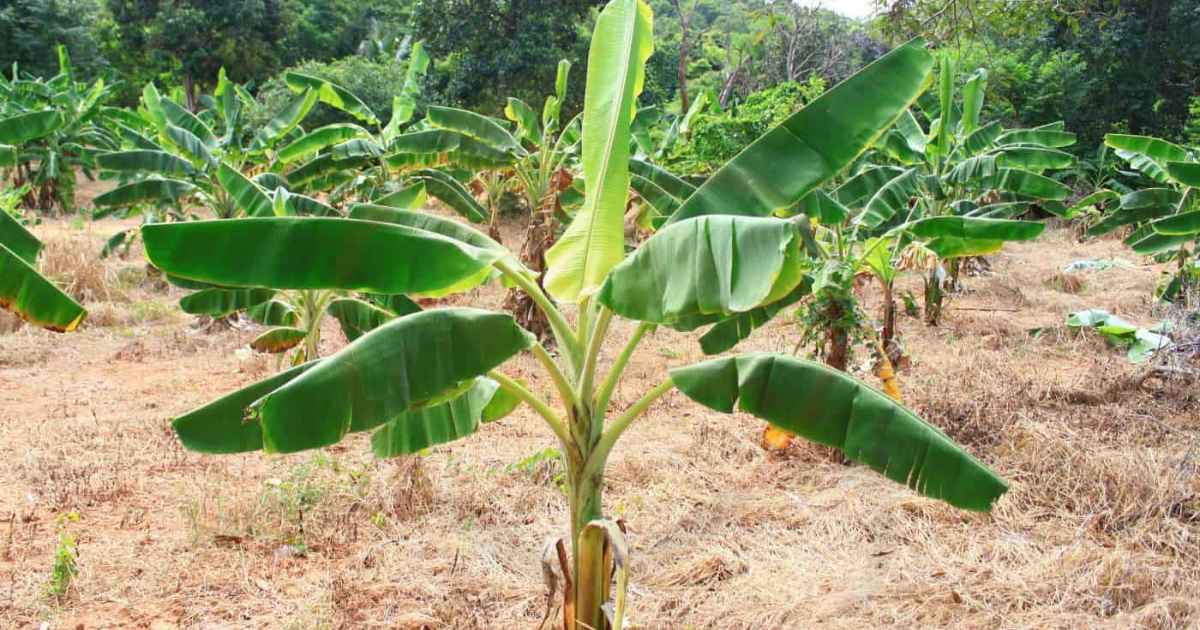
In this article, we’ll explore the step-by-step process of propagating a banana tree, whether you’re a gardening enthusiast or a novice.
Let’s dive in and learn how to grow your own thriving banana tree.
Understanding Banana Tree Propagation
Banana tree propagation involves creating new plants from the existing parent plant.
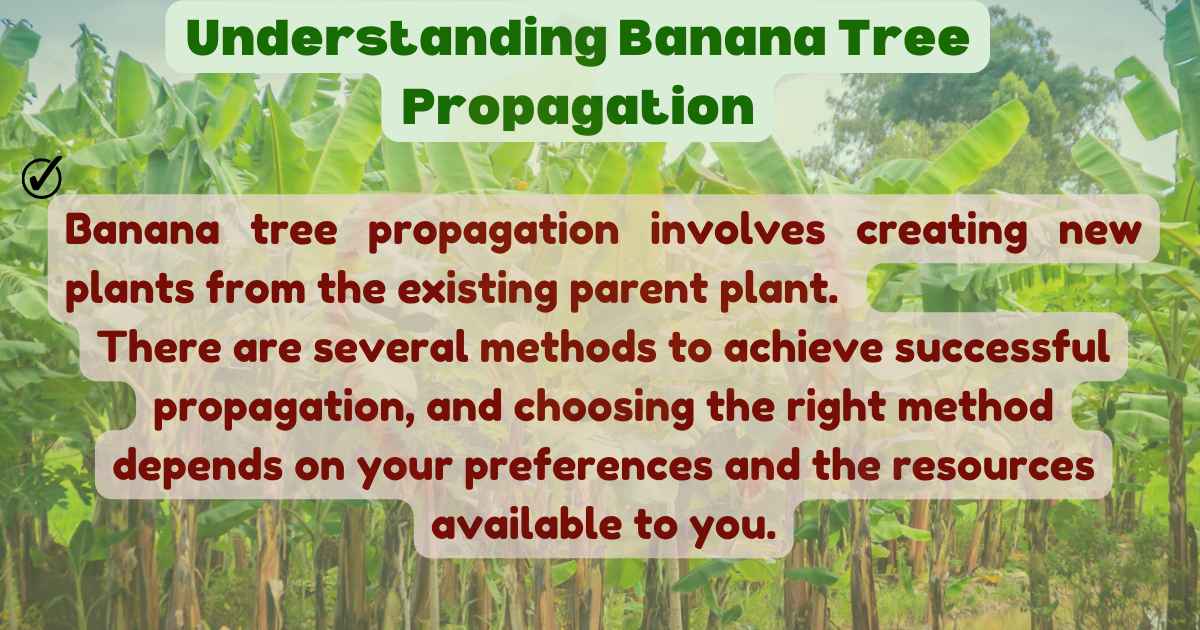
There are several methods to achieve successful propagation, and choosing the right method depends on your preferences and the resources available to you.
Propagation Methods
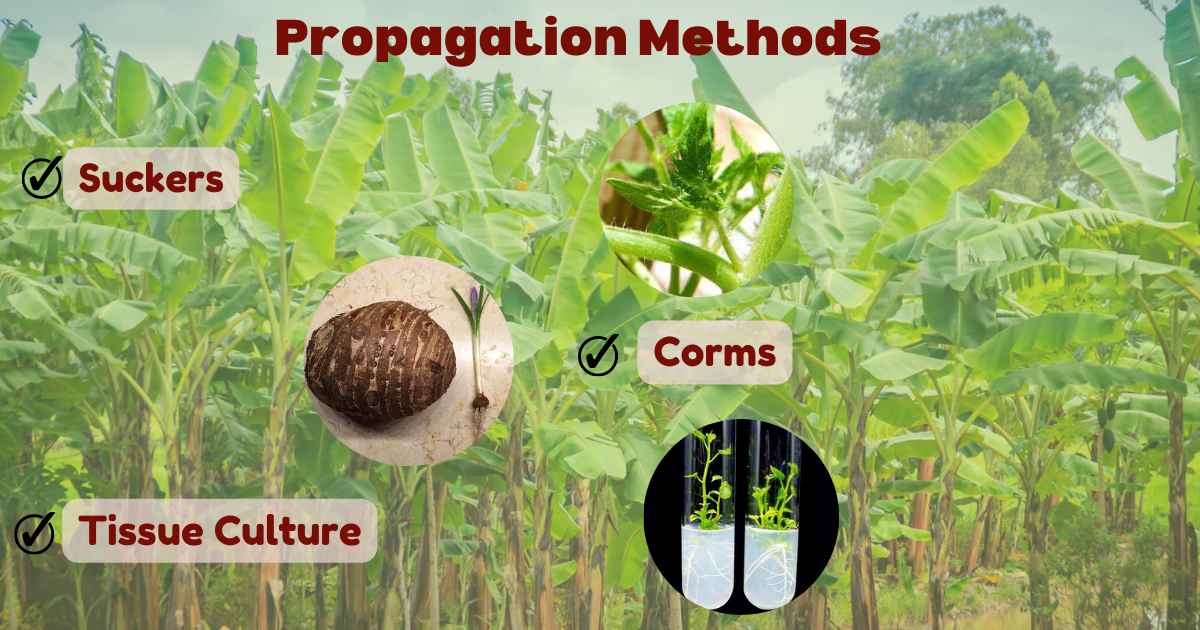
1: Suckers
Suckers are the small shoots that emerge from the base of the banana plant.
These shoots can be separated from the parent plant and transplanted to grow into new banana trees.
Suckers are a popular choice for propagation due to their ease of handling.
2: Corms
Corms are underground storage organs that resemble bulbs.
They can be divided and planted to produce new banana plants. Corms are a less common but effective method of propagation.
3: Tissue Culture
Tissue culture involves growing banana plants from small tissue samples in a controlled laboratory environment.
This method requires specialized equipment and knowledge, making it suitable for advanced propagators or commercial purposes.
Choosing the Right Method
When selecting a propagation method, consider factors such as your experience level, available resources, and desired outcomes.
Beginners may find success with sucker propagation, while more experienced gardeners might explore corm division or tissue culture.
Gathering Necessary Tools and Materials
Before you begin the propagation process, it’s essential to gather the tools and materials you’ll need.
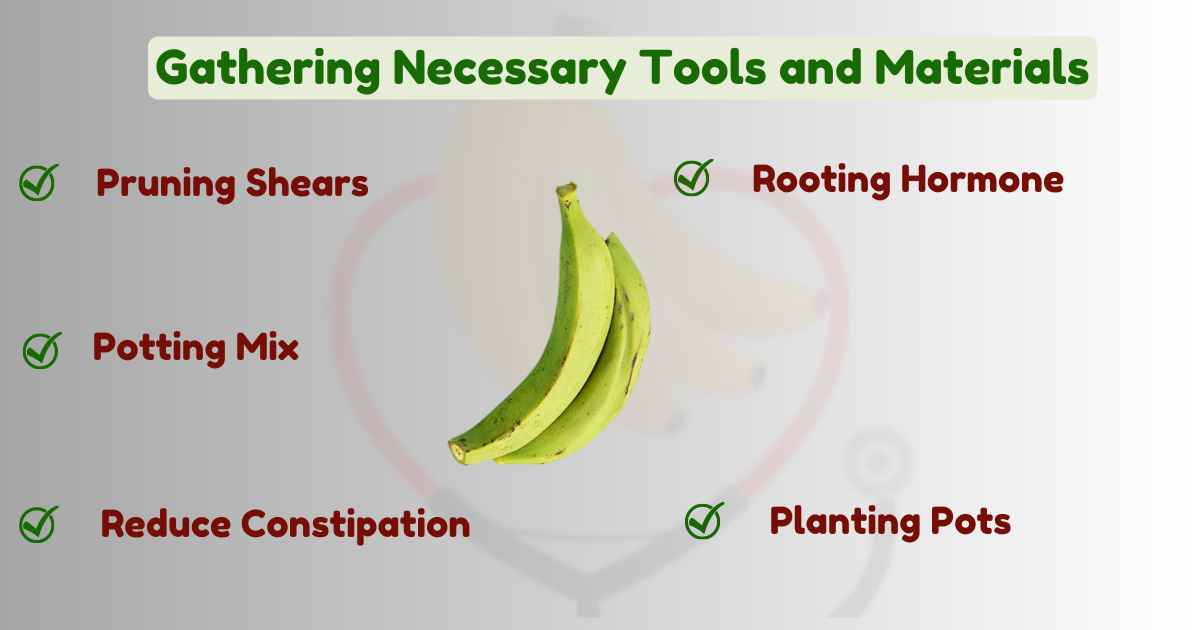
Pruning Shears
Used for cutting and separating suckers from the parent plant.
Rooting Hormone
A powder that encourages root development and enhances successful transplantation.
Potting Mix
A well-draining soil mixture suitable for potted plants.
Planting Pots
Containers to hold the newly propagated banana trees.
Step-by-Step Process of Propagate Banana Trees
Follow these steps to propagate banana trees successfully.
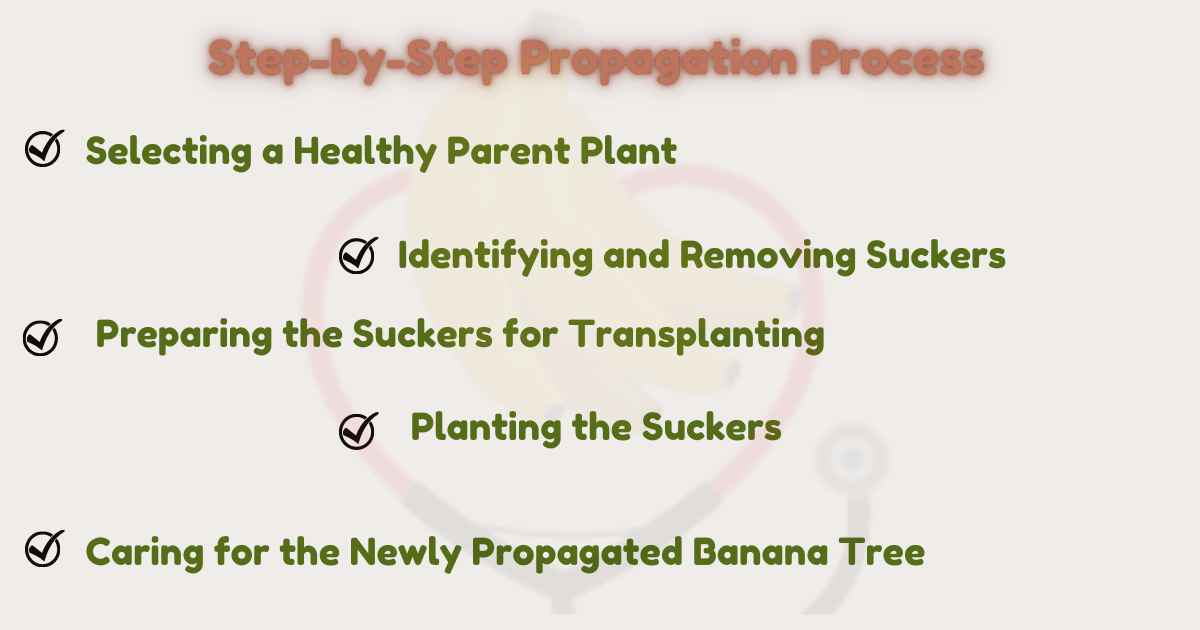
1: Selecting a Healthy Parent Plant
Choose a mature and healthy banana tree as the parent plant for propagation.
Look for a plant with vibrant leaves and sturdy stems.
2: Identifying and Removing Suckers
Inspect the base of the parent plant for emerging suckers. Suckers should have their own root system and a few leaves.
Carefully cut them away from the parent plant using pruning shears.
3: Preparing the Suckers for Transplanting
Dip the cut end of each sucker into rooting hormone to encourage root growth.
Allow the hormone to adhere to the cut surface.
4: Planting the Suckers
Fill planting pots with potting mix and create a small hole in the center.
Insert the treated end of the sucker into the hole and gently press the soil around it.
5: Caring for the Newly Propagated Banana Tree
Place the potted suckers in a warm and humid environment with indirect sunlight.
Water the plants regularly to keep the soil consistently moist but not waterlogged.
Tips for Successful Propagate Banana Trees
To ensure the success of your banana tree propagation efforts, consider the following tips.
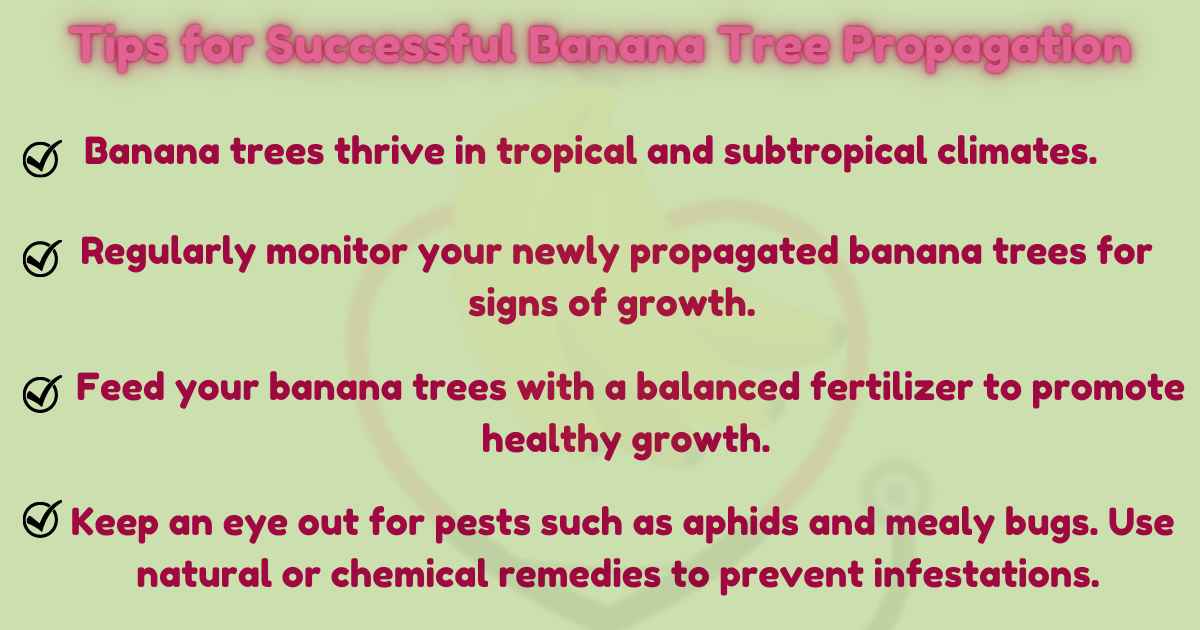
1: Optimal Conditions for Growth
Banana trees thrive in tropical and subtropical climates. Ensure your new plants receive ample sunlight, warmth, and humidity.
2: Monitoring and Watering
Regularly monitor your newly propagated banana trees for signs of growth.
Water them consistently, adjusting the frequency based on the moisture level of the soil.
3: Fertilization
Feed your banana trees with a balanced fertilizer to promote healthy growth. Follow the manufacturer’s instructions for application.
4: Protecting Against Pests and Diseases
Keep an eye out for pests such as aphids and mealy bugs. Use natural or chemical remedies to prevent infestations.
Additionally, avoid overwatering to prevent root rot.
Troubleshooting Common Issues in Propagate banana Trees
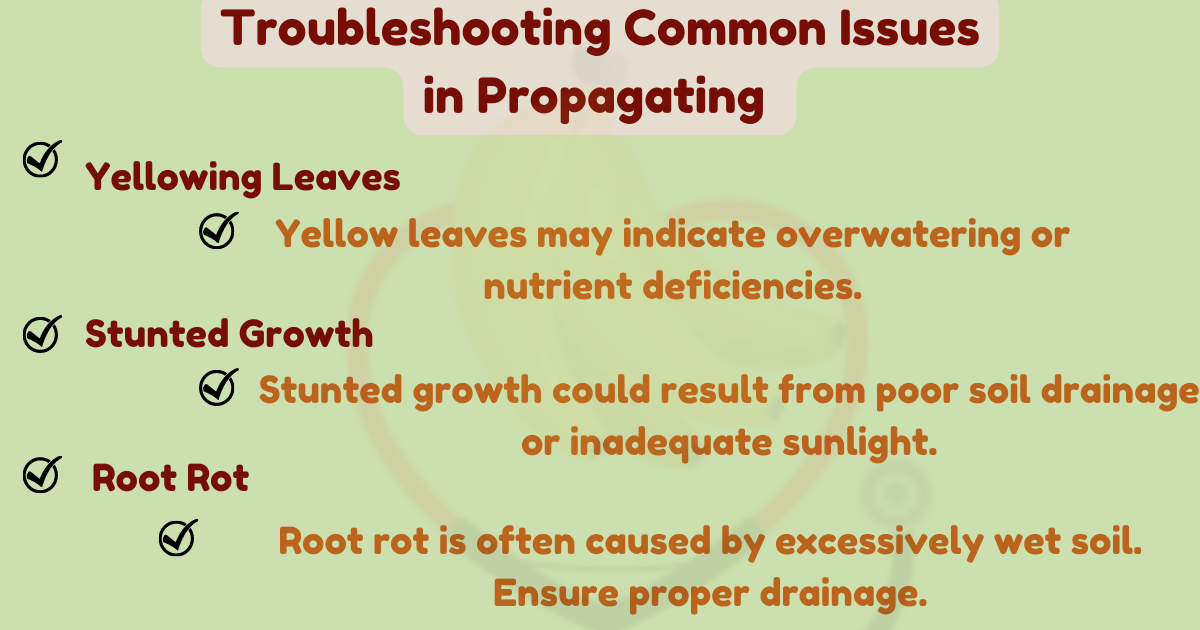
1: Yellowing Leaves
Yellow leaves may indicate overwatering or nutrient deficiencies. Adjust your watering schedule and consider fertilizing your plants.
2: Stunted Growth
Stunted growth could result from poor soil drainage or inadequate sunlight. Ensure proper soil conditions and provide sufficient light.
3: Root Rot
Root rot is often caused by excessively wet soil. Ensure proper drainage and adjust your watering routine to prevent this issue.
Propagate banana trees can be a rewarding and fulfilling experience for gardeners of all levels.
Whether you choose to propagate through suckers, corms, or tissue culture, following the right techniques and providing optimal care will lead to successful growth.
With patience and dedication, you can enjoy the beauty and bounty of your very own banana trees in your garden.
FAQs
Can I propagate a banana tree from a single leaf?
No, banana trees cannot be propagated from a single leaf. Successful propagation requires a portion of the plant with a root system, such as a sucker or corm.
How long does it take for a propagated banana tree to bear fruit?
It usually takes about 9 to 12 months for a propagated banana tree to start bearing fruit under ideal conditions.
Can I propagate a banana tree indoors?
Yes, you can propagate a banana tree indoors, but make sure it receives sufficient light and humidity.
Do I need to prune my newly propagated banana tree?
Pruning can help encourage healthy growth and remove any dead or damaged parts. However, avoid excessive pruning during the initial growth stages.
Is tissue culture propagation suitable for beginners?
Tissue culture propagation is more complex and requires specialized equipment and knowledge, making it less suitable for beginners.

